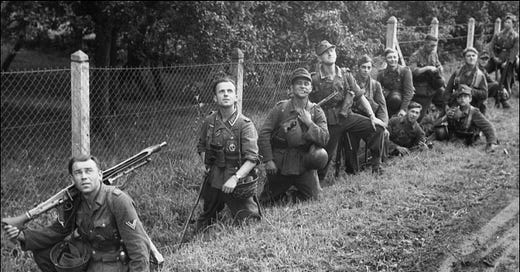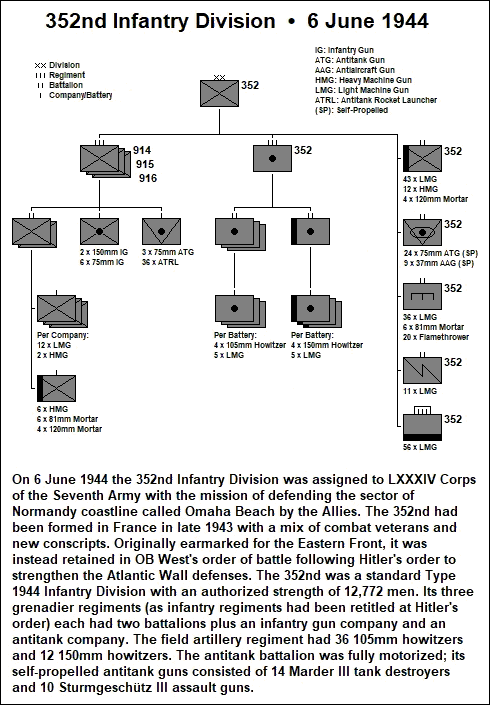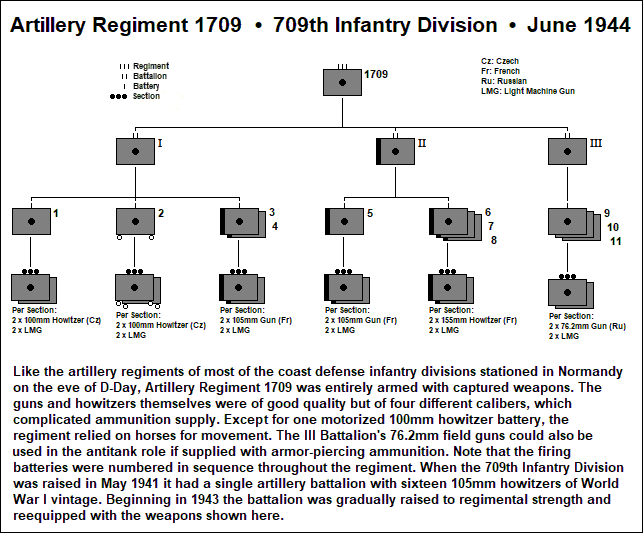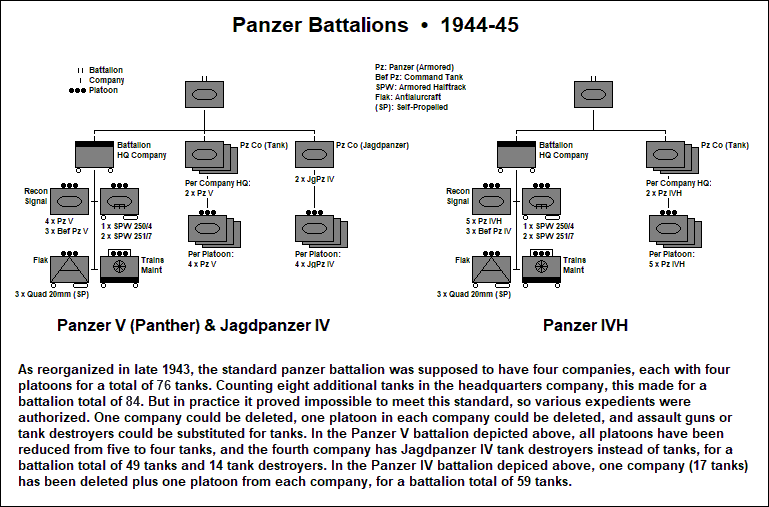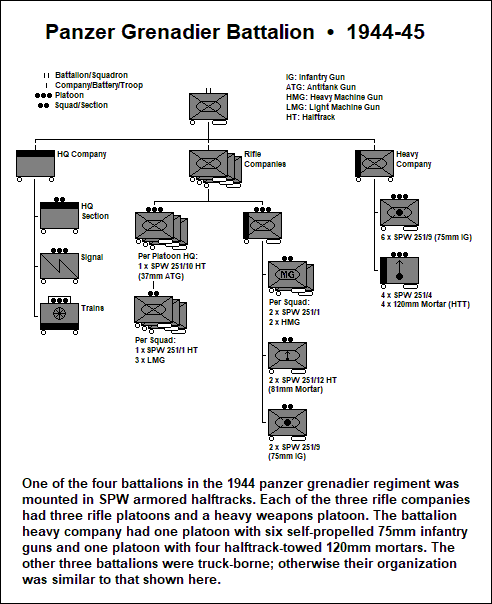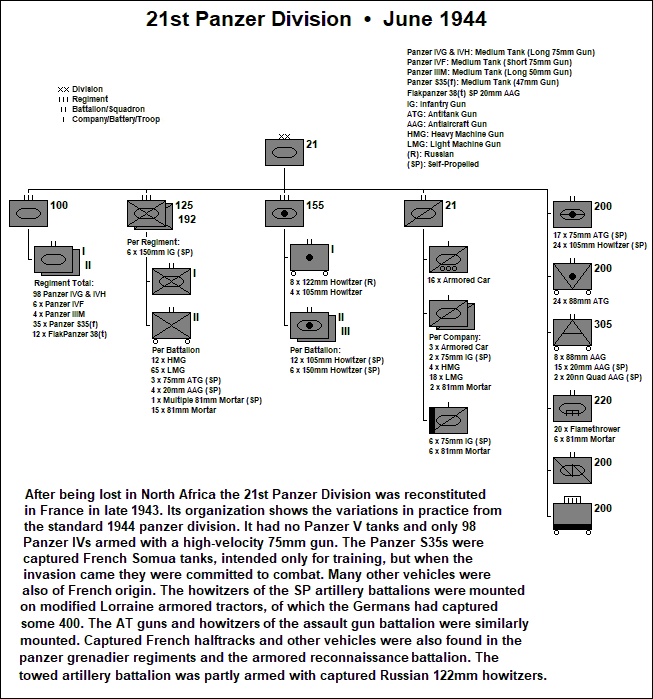NOTE ON NOMENCLATURE
By 1944, the German Army embodied three types of infantry division: the Infantrie-Division, the Gebirgsjäger-Division (mountain infantry), and the Jäger-Division (light infantry). Only the first type was found in the OB West order of battle. Armored divisions were designated Panzer-Divisionen and motorized infantry divisions were designated Panzergrenadier-Divisionen. The Waffen-SS used the same designations.
In 1942 Hitler ordered the infantry regiments of infantry divisions to be redesignated as Grenadier-Regimenten in memory of the army of Frederick the Great.
Of the armies under the command of Oberbefehlshaber West (Commander-in-Chief West or OB West) two were to be closely involved in the Battle of Normandy. For the defense of the Channel coast, Field Marshal Erwin Rommel’s Army Group B controlled nine corps with thirty-two infantry divisions and three panzer divisions in the Seventh Army (Normandy; five corps, seventeen divisions) and the Fifteenth Army (Pas de Calais; four corps, eighteen divisions). Panzer Group West embodied one corps and four panzer divisions, designated as OKW reserves. If this total seems impressive, it must be borne in mind that the German divisions were variable in quality. Nor did divisions of the same type all have an identical organization.
When the war began, the German infantry division was similar in structure to its American and British counterparts, consisting of three infantry regiments with three battalions each: the so-called triangular organization. But faced with an increasingly acute manpower crisis as the war dragged on, the Army found itself compelled to reduce the size of the infantry division. Incremental reductions lowering the division’s strength from 17,500 to about 15,000 men occurred up to 1943, when it became clear that more drastic action was required. In late 1943, therefore, one battalion was removed from each infantry regiment, leaving the division with a total of six. Within the rifle companies of the infantry battalions, the platoons were reduced from four to three squads. The divisional reconnaissance battalion was also deleted in favor of a so-called fusilier battalion with heavy weapons. One rifle company of this battalion, mounted on bicycles, provided a minimal reconnaissance capability.
This reorganization produced the Type 1944 Infantry Division (Infanterie-Division Kriegestat 44), reduced in strength from an average of 15,000 to 12,772 men. The loss of manpower was partly offset by increasing the division’s firepower with more machine guns, mortars and infantry antitank weapons. The 352nd Infantry Division, defending Omaha Beach on D-Day, was organized in this manner.
Many of the divisions assigned to Army Group B were so-called static (bodenständig) infantry divisions. Of the Seventh Army’s fourteen infantry divisions, half were static types. As the designation implies, these divisions were configured for static defense. They received lower-quality manpower, were partially armed with captured weapons, and lacked sufficient transport to move as a unit. The 709th Infantry Division, defending Utah Beach, was a unit of this type, its artillery regiment being equipped with captured French and Russian artillery. The static divisions were structured like the Type 1944 infantry division, with three two-battalion infantry regiments. Most had additional units attached, such as coast artillery batteries and the Ost battalions that are described below.
A number of Army Group B’s static divisions were former Luftwaffe field divisions, formed from surplus Air Force personnel. By 1944 these divisions had been transferred to the Army, retaining their original numbers with the designation (L). There were also two Luftwaffe parachute divisions and a separate parachute regiment in the Seventh Army sector. Neither of these divisions was up to strength at the time of D-Day but organizationally they were similar to the prewar triangular Army infantry division.
Some of the German divisions present in France on D-Day had been raised specifically for the defense of the West but most were divisions that had been redeployed from other fronts, often after suffering high losses in combat. In France they were reorganized and rebuilt with fresh drafts. Essentially these were new divisions, though they bore the numbers of preexisting formations. Their combat effectiveness was variable, depending mostly on the size and experience of the surviving cadres.
The Army’s panzer divisions had also been cut down in size since 1939, partly because of the manpower crisis and partly because their original organization had proved too unwieldy. The 1944 panzer division consisted of a panzer regiment of two battalions, one equipped with the Panzer IV, the other with the excellent Panzer V Panther, for a total of 168 tanks. But tanks, especially the Panther, were in short supply and some divisions had Panzer IVs only, sometimes with tank destroyers or self-propelled assault guns substituting for tanks.
The infantry contingent of the panzer division consisted of two panzer grenadier regiments, each with two infantry battalions Three battalions were truck-borne and the fourth was mounted in armored halftracks. But halftracks, like Panther tanks, were in chronically short supply. Some panzer divisions had only one or two armored infantry companies and some had to make do with trucks only.
The panzer division also had an artillery regiment with one self-propelled and two motorized battalions, an armored reconnaissance battalion, and various supporting units. But no two were exactly alike, being equipped with whatever happened to be available at the time they were raised or rebuilt. The panzer divisions of the Waffen-SS were similar to the Army panzer divisions but larger, and they usually had the latest equipment. In all there were nine Army and Waffen-SS panzer divisions and one Waffen-SS panzer grenadier division assigned to OB West, with six panzer divisions in the Army Group B zone.
The 21st Panzer Division, which bore the identity of the Afrika Korps division lost in North Africa, was reformed in France with a few veterans of the old division and a large contingent of conscripts. But despite its famous identity it was a new and largely inexperienced unit. The division was equipped with captured French vehicles, this thanks to the work of an innovative officer, Major Alfred Becker, a Great War veteran recalled to active duty in 1939. In 1942 he set up three workshops near Paris for the conversion of captured armored tractors, halftracks and other equipment for service with the German Army. Thus by 1944 the self-propelled artillery, infantry guns, assault guns and tank destroyers of the 21st Panzer Division consisted of German weapons mounted on modified French vehicles, while the panzer grenadier battalions and the reconnaissance battalion were equipped with French halftracks. During the Battle of Normandy Becker himself commanded the division's assault gun battalion, which was equipped with 75mm guns and 105mm howitzers mounted on the chassis of French H35 and H38 light tanks.
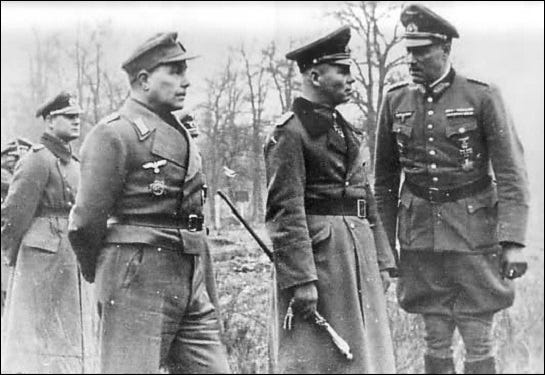
Most divisions were under a corps headquarters, but some were held as reserves under army or army group command. The 91st Air Landing Division, for instance, was one of two reserve divisions of the Seventh Army. The other was the 21st Panzer Division which though it remained under XXXXVII Panzer Corps, was earmarked for Seventh Army. XXXXVII Panzer Corps with its three divisions was the Army Group B reserve. Corps were variable in strength, with from two to five divisions.
Army Group B also had numerous separate brigades, battalions and static coast artillery units. Among them were the so-called Ost battalions, whose personnel were drawn from various ethnic groups in the occupied Eastern territories: Ukrainians, Georgians, Lithuanians, Cossacks, etc. Most of these battalions were organized as infantry; their officers and senior NCOs were German. The Ost battalions were lightly armed, sketchily trained and of low combat value. Most of them were attached to the static divisions in the coastal zone. As for the coast artillery, both the Army and the Navy contributed units, many of them armed with captured weapons. For example, Naval Artillery Battalion 608 had four batteries armed with a miscellany of German, French, Belgian and Russian guns.
Thus the German forces defending Normandy in June and July 1944 ranged from elite units like the 1st SS Panzer Division Liebstandarte, static divisions of indifferent quality, and Ost battalions of doubtful reliability. Despite this, the Germans put up a stout defense, and it was only their overwhelming material superiority, particularly in the air, which enabled the Allies to prevail.
